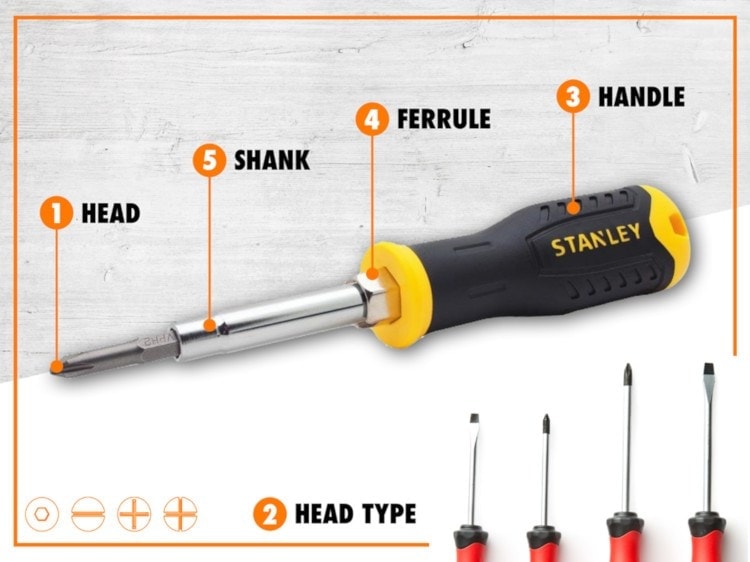Parts of a Screwdriver (Explained with Pictures)
-

- Last updated:


Screwdrivers are incredibly versatile tools that look simple. You insert the tip into a screw, turn it, and, depending on your motion, it either goes in deeper or comes out. But it’s a bit more complicated than that. When you’re in the market for a new screwdriver set, make sure you get the right tool to ensure superior results. Knowing the parts of a screwdriver and how they fit together will help you determine which type is ideal for you.

The Parts of a Screwdriver
1. Head
The head is the screwdriver’s tip. It’s what you insert into the screw or nut. It is also the most important part of the screwdriver.
2. Head type
Traditional screwdrivers are used for slotted screws. A more refined crosshead, a Phillips head screwdriver, was developed later. Several heads are available for various uses, from woodworking to advanced consumer electronics like phones.
3. Handle
Screwdrivers with molded plastic handles tend to be a little longer-lasting and stronger than handles made of wood. The wood handles are old-school designs, and most screwdriver sets are made from synthetic materials.
4. Ferrule
Between the handle and the shank on some screwdrivers is the ferrule. It’s a little metal cup in the handle that holds the shank in place. The bottom line is that screwdrivers with ferrules are stronger than screwdrivers that are just molded plastic around a metal shank.
5. Shank
A screwdriver’s shank is a thin metal rod between the handle and the head. On most screwdrivers, it’s a very straightforward piece of metal.
However, some screwdriver sets allow you to swap out shanks of different lengths for greater versatility. Even more common are shanks with openings at the top where you can slip in whichever head you need.

Conclusion
Most screwdriver parts are pretty self-explanatory. However, it’s still helpful to understand what they do, especially when shopping for screwdrivers. Knowing the different parts will help you get the right toolset for your needs.
- Related Read: Which electric screw-driver is our favorite-pick?
Contents
